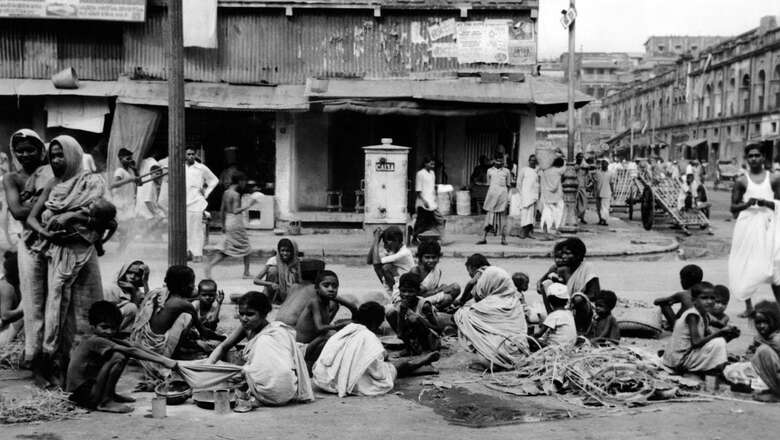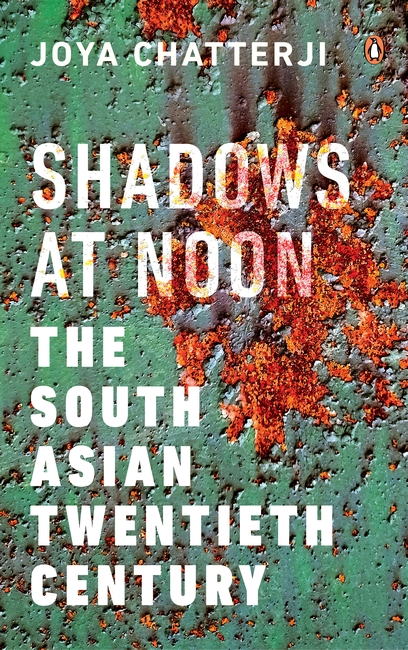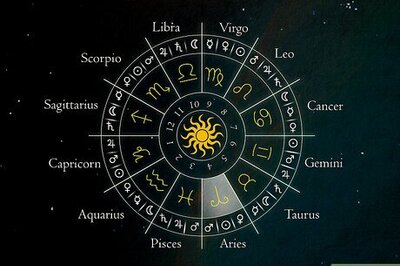
views
The British Indian Army after 1857 had been recruited from India’s mountainous regions, Pathans, Punjabis and Nepalis who were to become the sword arm of Britain’s military power in India. The less substantive ties of these groups from remoter regions to the politics of the Indian heartland were intended to ensure they would be willing to chastise the wider population, uncontaminated by local resentments. In the context of inherited armed forces, Joya Chatterji outrageously draws a false equivalence on their domestic use by the subcontinent’s three national armed forces after independence.
As someone who has counted some of India’s most senior generals as friends, I have usually been impressed by their professionalism and integrity and taken aback by their liberal worldview. But JC’s libelous equation of India’s military culture with Pakistan’s is understandable since she seems hell-bent on absolving the Punjabi Muslim Pakistani Army of mass murder and rape on an industrial scale in East Pakistan during 1971. It was Pakistani President Yahya Khan, the rampant sexual predator, who in conjunction with Zulfikar Ali Bhutto, had announced that killing three million Bangladeshis would make the others ‘eat out of your hand’.
Joya Chatterji writes rather feelingly of India’s Islamic history and culture, without any allusion to the grim fate of Hindus under Islamic rule. The Mohammed Iqbal she admires was a bigot, consumed by jealousy at the award of the Nobel Prize for Literature to Rabindranath Tagore. Her contention that Jinnah was proficient in Urdu is an exaggeration because he needed a translator for his speeches in the Northwest frontier province. Her conviction that there were divisions within Islam between hardline Islamic ideologues, who were in fact influential generations before India’s partition, and an allegedly dominant relaxed local tradition of pirs, cannot withstand scrutiny either. The triumph of the former in Pakistan was entirely predictable and the nation’s search for religious purity impacted not just Hindus but non-Sunni Muslims and is entirely consistent with the basis for its creation. JC also tosses in the egregious falsity that the protection of Hindu minorities in Pakistan was an official government policy. It leaves one speechless at the shameless extent of her apologetics of serial kidnapping, rape of girls and the murder of Hindus in Pakistan (p. 151).
In addition, the impulse to create a unitary nation by force and manipulation contradicted the claims of Islamic ideologues, like Jinnah, that Muslims were an inviolably idiosyncratic nation which had little in common with Hindus. It soon became clear that bonds of Islamic solidarity could not themselves hold Muslims of Pakistan together. In fact, Pakistan was synonymous with West Punjab, which dominated the Army, bureaucracy and politics, alienating every other regional ethnicity. Besides, JC has no understanding of geopolitics since the Western alliance calculatedly thwarted Pakistani democracy which might have hindered their control over the country. The descent into self-destructive Islamic radicalism, now devouring Pakistan, was the logical outcome of the rationale of its political and ideological foundations. It was the result of the heady admixture of the supremacy over it, of shockingly corrupt Anglo-American sponsored military dictatorships, most becoming dual nationals eventually, and the country’s creation on insanely sectarian religious mythologies. Pakistan is truly a case study of the inevitable corruption of unchecked absolute power and still unconsecrated religious identity.
In an extended discussion of regionalism and linguistic politics in India, JC dismisses the Ramayana and Manusmriti as the Vedic texts merely prescribing ‘rules of caste order’. She denounces the policy of promoting Hindi spitefully, as ‘reeking’ of Sanskrit and Brahminism, implying an offensive aura. Although the attempt to promote Hindi indiscriminately was indeed misguided, her criticism is couched in idioms of revulsion for India’s past and its Brahmin custodians, which are routine colonial evangelical tropes. Later in her book, JC engages in an overlong discussion of Indian agricultural practices to produce food, its ritual preparation, alleged hierarchical culinary habits and their symbolic religious significance. She finds distasteful vegetarianism, eschewing meat, and casteism though not all Hindus do. However, vegetarianism is now coming to be regarded by many as sensible for personal health and compelling ecological reasons. There is also a deeper rationale for Hindu culinary culture, intended for the sustenance of body and mind, occupying a central place in Ayurveda, that deserves considered attention. Her anguished lengthy discourse on the class divisions underlying food production and consumption is not uniquely Indian and happens to be a universal global phenomenon.
Yet, somewhat contradictorily, JC does recognise the fragile artificiality of caste identities, which were institutionalised by the instrumental politics of the British census. It has subsequently transformed into the bleak basis for dissipating any sense of a shared national destiny in post-independence India (p. 527). Not unexpectedly, Joya Chatterji does not really have empathy for the Hindu attribution of sacredness to the cow, a taboo that did originate gradually over time, though India continues to struggle with ensuring its benevolent treatment. Cow slaughter was banned during Emperor Humayun’s reign for pragmatic reasons and merited the death penalty in Maharaja Ranjit Singh’s Sikh kingdom. Muslim conquerors also understood the religious significance of cows to Hindus and frequently desecrated Hindu temples and idols with cow carcasses and blood, including the Golden Temple on one occasion. Some Muslim religious writers even enjoined cow slaughter to demonstrate to Hindus their powerlessness and British colonisers took to consuming cow meat routinely.
JC’s disquiet at India’s display of military prowess on Republic Day highlights her quaint ideological blinkers and ignorance of historical facts as well as distaste for India’s attempt to establish an identity. Joya Chatterji does not seem to understand the unavoidable imperative of spending on military preparedness, however ethically unwelcome, in a world of chronic state competition and violent conquest, which India was to encounter in 1962 and 1965. She seems blissfully unaware of the result of a lack of defence preparedness in 1962 for India and the urgency of the subsequent organisational reforms. They were ushered in by a great Bengali General, J. N. Chaudhuri, Chief of Staff, which saved Delhi in 1965. According to a General and friend of mine, who fought in 1965, the far-reaching reforms of India’s armed forces and their reequipping prevented the security of Delhi from being jeopardised by Pakistani marauders. This is the same plundering army which had earlier ravaged J&K in 1947-48, kidnapping innumerable women, later consigned to brothels in Pakistani cities like Peshawar. A penchant for murder and mass rape, the historical signature of Muslim armies everywhere in history, was to be repeated during 1971 in East Pakistan until India liberated the country. But this kind of harsh reality apparently militates against her condescending personal reveries about the nobility of the human condition, especially where Islam and Pakistanis are concerned.
Independent India’s myriad societal divisions and policy missteps attempting to unite the nation, prompting public unrest though rectified in response, are retailed with an undertone of schadenfreude by Joya Chatterji. Her unease at the use of the school history curriculum to promote nation-building and her insistence on drawing parallels between India and Pakistan are misplaced on innumerable counts. Such attempts are hardly novel and were infinitely cruder elsewhere and in Britain too, as historian Linda Colley has demonstrated. JC’s naiveté confirms the point made to me by a distinguished Indian Cambridge archaeologist of the mediocrity of Indian studies in Britain. In addition, Pakistan had no history, though laughable claims are made by many Pakistani Muslims to a fictitious Turkic and Arab pedigree and descent directly from the Prophet himself or his companions. Besides, it is puzzling why JC does not approve of the blatant propaganda applauding India’s Islamic conquests that fill Indian history school textbooks to this day. In India, the revision of school history and humanities textbooks is the final frontier of longstanding grotesque calumny against all things Hindu by JC’s Indian Left-liberal associates, many of whom she lists in her acknowledgements.

JC might have mentioned in passing something about taxation levels of the very same Mughals and exactly how it was collected since her nostalgia for the tyrants is an ineffable underlying theme in her musings. Elsewhere, she casually pronounces a gross falsehood that the postcolonial Indian state also has a propensity to violence towards women, Dalits, minorities or party opponents (p. 250). This is the kind of stupefying nonsense one reads in the New York Post, The Washington Post, the London Guardian and other media outlets of adversarial states, engaged in information warfare against India. It is also an indication of the scale of lies adversaries of all things Indian will routinely propagate while sitting in great comfort and with infinite privilege in its capital city and ready to squeal Hindutva harassment if any critic dares challenge.
Joya Chatterji does not display any compassion for independent India’s forlorn stumbling quest to recreate its ancient past in national museums by assembling ancient artefacts. She also sporadically expresses unease over the largely abortive attempts to resurrect Sanskrit in contemporary India that Muslim ideologues also find reprehensible. But she finds nothing anomalous for Pakistan, created by rejecting Hindu civilisation wholesale, fighting to retain decidedly Hindu objects discovered at Mohenjodaro. She also waxes eloquent at considerable length about Islamic monuments scattered in Delhi, built by some of the worst tyrants in Indian history. It might explain her lament over the displacement of the Babri structure by a grand Ram Mandir, an issue over which JC doesn’t hesitate to repeat half-truths demolished by India’s courts. In this context, it is worth noting that JC’s implicit denigration is specially earmarked for Bankim Chandra Chatterjee, Bal Gangadhar Tilak, and Vinayak Damodar Savarkar. They are the icons of the Bharat now taking shape, appropriately spurned by an Anglo-Indian enthusiast of Pakistan, even as that country lingers between the gutter and sewer of the corporeal reality of historical verity.
The long sections on Bangladesh and Pakistan lack critical elements that would have contextualized her rather shallow cogitations on them. She fails to mention Mujibur Rahman’s role in the Great Calcutta Killings as a key lieutenant of Chief Minister Huseyn Suhrawardy. JC seems unaware of the US complicity in murdering him and his entire family, persuasively argued by my friend, the Cambridge University graduate student, Lawrence Lifschultz. It is worth mentioning in passing that one of the accused conspirators in the killing of forty members of Mujib’s family, including a sixteen-year-old newly-wed bride, found employment as head of the BBC Bengali Service. It might be noted that Zulfikar Ali Bhutto’s politics and wish to engage with India after 1971, highlighted approvingly by JC, were not motivated by any fondness for it since he himself was the principal architect of Operation Gibraltar, the 1965 war against India. After a visit to India in the immediate aftermath of India’s defeat by China in 1962, owing to the serial catastrophic errors of Nehru and his sister, Vijaya Lakshmi Pandit (she compared Mao to Gandhi) on his return home, Bhutto exultantly proclaimed to President Ayub Khan that India was on its knees and it was the right moment to strike. Apparently, President Ayub Khan himself had some reservations.
Significantly, a senior Indian aide to Nehru, Y. D. Gundevia, ICS, who was accompanying Bhutto to the airport, had said to him: Settle while the old man is alive – meaning Nehru. After that you will get nothing and, Mr. Bhutto, don’t fight for it. Instead, Bhutto tried to persuade China to join Pakistan and launch another invasion of India simultaneously with the planned assault of Operation Gibraltar in 1965. It was much like an identical proposal to attack India subsequently made to thwart India in 1971 by Henry Kissinger to Huang Hua, China’s Ambassador to the UN. The Soviets mobilised forty divisions at the Sino-Russian border to convey a stark message to desist from any such attempt. Another Pakistani strong man, General Zia Ul Haq, whom JC dismisses as not very bright and who had cynical manipulator Bhutto hanged in a karmic denouement, was praised enthusiastically by the editor of the London Times, William Rees-Mogg, who compared him to Oliver Cromwell. This is what passes for profound insight into the upper reaches of British intellectual life and its benighted universities, ever ready to participate in some national conspiracy against coolie peoples.
After pointing out that Pakistan had no identity, no history or institutions or even offices and typewriters at independence and the army claiming to be its sole custodian, Joya Chatterji is unable to resist equating it with India by unconvincingly proclaiming: “the two states, for all their bluster and claims to be so…. different from each other, were akin. After independence, both were in much the same boat, and that boat often looked as if it was about to capsize. Both were post-colonial ‘nation-states’, which prized loyalty to the nation above all else” (p. 315). A balanced appraisal is thrown out of the window to bring India down a peg or two, so redolent of the Anglo-American patrons of Pakistan unfailingly attempting to legitimate their faithful Cold War asset by slandering India. Some even deny India’s very antiquity (i.e. Hinduism itself is alleged to be a colonial construct by inventively adding the suffix neo to it).
In this context, Joya Chatterji’s earlier work, blaming upper caste Hindus for Bengal’s partition in 1947, though a view excoriated by one of her own hard Left fellow travellers, makes perfect sense. It was Bengali Hindu leaders, like Syama Prasad Mukherjee and N.C. Chatterjee, who campaigned for Bengal’s partition, opposing Jinnah’s demand for Bengal in its entirety (Assam and India’s Northeast too). In fact, decades earlier, it was Muslims who had been unconcerned about the British attempt in 1905 to partition Bengal territorially. The ploy was intended to cut down to size radicalized Bhadrolok Bengali babus fighting British rule and they protested successfully to thwart the attempt. The Muslims had begun viewing themselves as Britain’s partners in the empire, as Sir Syed Ahmed Khan had recommended. It was the cynical sectarian plotter, Mohammed Ali Jinnah, one of Joya Chatterji’s subcontinental heroes, who suggested to Winston Churchill: “Let’s cut out the Hindus and rule together!” In the case of Punjab, partition was ensured by three state assembly Christian votes, including that of the speaker, who complied with instructions from London. All of India’s Christian organisations had already turned their face against Nehru’s overtures to engage with the Congress party. In an arresting instance of karmic justice, all three Christian supporters of Punjab’s partition were promptly discarded by Jinnah after Pakistan’s creation.
There is a methodological default setting in which JC mistakes of policy choices, dictated in the three countries of the subcontinent by situational ecological realities of development, with deliberate official policy convergence. JC argues that this arose because they all emerged from the same cradle of the Raj and its traditions. This is what buttresses the pipedream defining JC’s overall narrative impulse, which posits the idea of three nearly identical societies. By underrating situational imperatives, JC’s narrative also ascribes an unduly preponderant explanatory role to personalities and ideologies like nationalism and Hindutva though her intellectual grasp of these phenomena is manifestly weak. However, she does situate the Indian Emergency under a supposedly authoritarian Indira Gandhi on the dramatic economic crisis of 1974-75, which had precipitated a popular revolt against her government. Joya Chatterji would probably be stunned to know that during the entire period of economic crisis from 1974, leading up to the collapse of the Indian economy in 1991, it was Manmohan Singh who was responsible for it in one role or the other. He is usually given credit, along with Prime Minister PV Narasimha Rao, for the supposedly bold reforms of 1991 when, in reality, the economic policy reform menu was handed to them by the Directors of the IMF in return for a loan.
She also subtly insinuates conflicts within India were mostly due to Brahminical and Hindutva prejudices. The depiction of India especially articulates a hostile neocolonial trope commonplace in the hallowed portals of major Western academia. It patronizingly satirizes the complex cleavages and chaos of Indian society and the weakness of its governance, accompanied by official insensitivity. JC perversely deprecates as patriarchal, the universal impulse to protect women and regard that duty as a primary attribute of a society’s integrity, whether among the nineteenth-century indentured labourer or the Mukti Bahini in 1971. There is little sense of context and a reprojection of glib contemporary feminist preconceptions to interpret the choices of the unfree (e.g. p. 364).
JC evokes the ghastly fate of ordinary Indians, nineteenth-century indentured labourers and victims of modern human trafficking from the subcontinent, with sympathy, their mistreatment prompting fitting censure. Shorn of her resort to pointless Western feminist homilies about patriarchy, etc., it is absolutely essential to have highlighted the exceptional fate of powerless proletarian women who also gave painful and often life-threatening birth as child brides. Women’s lives, caught up in the chaotic and unforgiving vortex of daily life in society, without much succour, surely constitute one of the universal failures of mankind in history. From young to old age, the fate of girls and women has been pitiable, the opportunity for childhood play ended very early, followed by ceaseless days of drudgery. It usually meant demanding manual labour, at home, in the factory or a building site, while struggling to protect their children. The lives of men possessed more agency, but penury and backbreaking toil was their lot too. Uncertainty about where the next day’s food would come from haunted them all. Her account of the mass internal migration within India and the inhuman working conditions and lives of countless millions, uncared flotsam, struggling to keep body and soul together are immeasurably poignant. However, at the bottom, the cause is poverty, not culture and tradition whatever intervening role they played.
JC’s belief that rural women, in particular, were married to grooms residing at a sufficient geographical distance by an inclination to prevent interference by her own family in the home of in-laws of possible ‘bigamy, cruelty or violence’, is somewhat simplistic. It was likely intended to ensure intergenerational exogamy which would otherwise be harder to track if couples lived in proximity to each other. Quite puzzlingly, JC asserts the ‘norms for the socialization of women’ across the subcontinent’s regions and the religious divide were ‘identical’. She recounts with evident relish the conversion of a Brahmin woman, Atreyee Devi, to Islam to escape an oppressive marriage during the fraught times of 1944. JC uses the infamous marital rape and killing in 1889 of the eleven-year-old Phulmonee by her much older and heartless Hindu husband to furtively imply it as a feature of Hindu married life. However, the unequivocal religious legitimacy for Muslims to engage in sexual intercourse with an even younger girl child and its routine prevalence in Muslim countries, regularly resulting in injury and fatalities, do not merit JC’s comment.
There cannot but be respect and admiration for subcontinental women who faced huge challenges with courage, dignity, determination and sometimes agency. Nevertheless, Joya Chatterji’s unhistorical feminist ideological retrojections, depicting the fate of women, fail to recognize the exacting universal economic realities that institute conditions of the unforgiving upbringing and married lives of women (interpreted in Firstpost, Gautam Sen, June 2023). In this context, JC’s admiring elevation of the dacoit and parliamentarian Phoolan Devi to some sort of exemplar is misplaced since she was an anomaly, whatever the strength of her personality and her remarkable ability to overcome crippling social handicaps.
It is necessary that this story be told but, in recent times, the Indian government has taken many steps, unprecedented in India’s history, to ease the lives of the poor and destitute and India’s economic prosperity continues to change lives for the better. Joya Chatterji repeats discredited party political JNU taunts, without empirical substance, about the impoverishment of India’s rural poor by marketization. There is now prodigious evidence that marketization while entailing some transitional distress, has lifted countless Indians out of poverty. It has been combined with bold and imaginative welfare measures, like free foodstuffs and the innovative policy of direct benefit transfer to personal bank accounts, which avoid leakages to intermediaries.
Joya Chatterji’s praise for the Cambridge-educated Manmohan Singh, whose ideological predilections she seems to share, amounts to crass special pleading for a fellow alma mater. He left the Indian economy in tatters in the period before 1991, returning in 2004 as prime minister, for a whole decade. Manmohan Singh was to leave the Indian economy mired in ruinous corruption and heading towards a definitive implosion by 2014 once again. The Machiavellian master of guile was criminally culpable for grave damage to India and its economy over decades.
JC cannot be faulted for pointing to the unfeeling heartlessness of officialdom and the tragicomic pathos of encounters with it of aam aadmi, whether it is India’s courts and police or its bureaucracy. But despite the sensitivity of JC’s accounts of the dismal experiences of the hapless mass of humanity in the colonial period and subsequent decades of Indian independence, although moving, cannot be allowed to seduce. Her orientation still lacks overall context and empathy for independent India, overwhelmed by the magnitude and complexity of the burdens it was encountering and besieged by a paucity of resources and yet also achieving significant victories over cruel circumstances. India did overcome the routine famines that had haunted it historically by making colossal efforts and has subsequently mitigated malnutrition in contemporary India. However, in the end, JC’s predisposition towards an unsympathetic depiction of India is a vivid example of the kind of assassination Western social science and a systematically skewed historical analysis constantly engage in against a reviled prey.
To be continued
The writer taught international political economy for more than two decades at the London School of Economics and Political Science. Views expressed in the above piece are personal and solely that of the author. They do not necessarily reflect News18’s views.


















Comments
0 comment